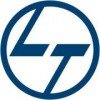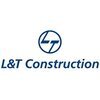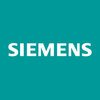Filter interviews by
Kalpataru Projects International Graduate Engineer Trainee (Get) Interview Questions and Answers
Kalpataru Projects International Graduate Engineer Trainee (Get) Interview Experiences
1 interview found
Top trending discussions






Interview questions from similar companies

Graduate Engineer Trainee (Get) Interview Questions & Answers
Worleyposted on 5 Dec 2024
I applied via campus placement at BRACT's Vishwakarma Institute of Information Technology, Pune and was interviewed in Nov 2024. There were 3 interview rounds.
Basic Aptitude Questions Reasoning & Verbal Ability
How is culture at IT Industries
(12 Questions)
- Q1. What are the tensile forces acts on material
- Ans.
Tensile forces are forces that stretch or pull materials apart.
Tensile forces act in the opposite direction of compressive forces
Examples of tensile forces include stretching a rubber band or pulling on a rope
Tensile strength is a measure of a material's ability to withstand tensile forces
- Q2. Write all formulas you know of Fluid Mechanics
- Ans.
Formulas in Fluid Mechanics
Bernoulli's equation: P + 0.5ρv^2 + ρgh = constant
Continuity equation: A1v1 = A2v2
Navier-Stokes equation: ρ(∂v/∂t + v∇v) = -∇P + μ∇^2v + ρg
Ideal gas law: PV = nRT
Poiseuille's Law: Q = πr^4(ΔP)/(8ηL)
- Q3. Laws of thermodynamics
- Ans.
The fundamental laws of thermodynamics govern the behavior of energy in systems.
First Law of Thermodynamics: Energy cannot be created or destroyed, only transferred or converted.
Second Law of Thermodynamics: The entropy of an isolated system will always increase over time.
Third Law of Thermodynamics: As temperature approaches absolute zero, the entropy of a system approaches a minimum value.
Examples: A car engine conve...
- Q4. What is Fouriers Law write its equation
- Ans.
Fourier's Law describes the flow of heat through a material.
Fourier's Law states that the rate of heat transfer through a material is directly proportional to the negative gradient of temperature and the area perpendicular to the direction of heat flow.
The equation for Fourier's Law is q = -k * A * (dT/dx), where q is the heat transfer rate, k is the thermal conductivity of the material, A is the cross-sectional area, ...
- Q5. Explain Iron Carbon phase diagram
- Ans.
The Iron-Carbon phase diagram illustrates the phases and microstructures of iron-carbon alloys as a function of temperature and composition.
Shows the phases of iron and carbon at different temperatures and compositions
Includes regions for austenite, ferrite, cementite, and pearlite
Critical points such as eutectic point and eutectoid point are marked
Used to predict the microstructure of steel based on composition and he
- Q6. Stress Strain Curve Explain
- Ans.
The stress-strain curve shows the relationship between stress (force applied) and strain (resulting deformation) in a material.
The curve typically consists of three main regions: elastic deformation, plastic deformation, and fracture.
In the elastic region, the material deforms elastically and returns to its original shape when the stress is removed.
The plastic region is where permanent deformation occurs, but the mater...
- Q7. Calculate SFD & BMD
- Ans.
SFD and BMD are calculated using equations of equilibrium and relationships between load, shear force, and bending moment.
Calculate reactions at supports using equations of equilibrium
Determine the shear force at different points along the beam by considering the applied loads and reactions
Calculate the bending moment at different points by integrating the shear force diagram
Plot the SFD and BMD based on the calculated...
- Q8. How to Calculate velocity of fluid flowing through pipe
- Ans.
Velocity of fluid flowing through a pipe can be calculated using the formula Q = A * V, where Q is the flow rate, A is the cross-sectional area of the pipe, and V is the velocity of the fluid.
Calculate the cross-sectional area of the pipe using the formula A = π * r^2, where r is the radius of the pipe.
Determine the flow rate (Q) of the fluid, which is typically measured in cubic meters per second (m^3/s) or liters per...
- Q9. What is Difference between entropy and enthalpy
- Ans.
Entropy is a measure of disorder or randomness in a system, while enthalpy is a measure of the heat energy in a system.
Entropy is a thermodynamic property that measures the amount of energy in a system that is not available to do work.
Enthalpy is a thermodynamic property that measures the total heat content of a system.
Entropy increases in irreversible processes, while enthalpy remains constant.
Entropy is denoted by S,...
- Q10. Draw Refrigeration Cycle Graph
- Ans.
The Refrigeration Cycle graph shows the process of cooling a space by transferring heat from inside to outside.
The cycle starts with the refrigerant entering the compressor as a low-pressure gas.
The refrigerant is compressed, raising its temperature and pressure, before entering the condenser where it releases heat to the surroundings.
After losing heat, the refrigerant becomes a high-pressure liquid and flows into the ...
- Q11. Draw vapour absorption cycle graph
- Ans.
The vapor absorption cycle graph shows the relationship between pressure, temperature, and enthalpy during the process.
The graph typically shows pressure on the y-axis and temperature on the x-axis.
It includes lines representing the various stages of the cycle such as evaporation, absorption, and desorption.
The enthalpy values at different points in the cycle can also be plotted on the graph.
Example: The graph will sho...
- Q12. Draw Rankine otto & diesel cycle graph
- Ans.
The Rankine, Otto, and Diesel cycle graphs are commonly used in thermodynamics to analyze different types of heat engines.
The Rankine cycle is used in steam power plants and consists of four processes: heat addition, isentropic expansion, heat rejection, and isentropic compression.
The Otto cycle is used in spark-ignition engines and consists of four processes: isentropic compression, constant volume heat addition, isen...
Interview Preparation Tips
- Strength of materials
- Thermodynamics
- Heat Transfer
- Fluid Mechanics

Graduate Engineer Trainee (Get) Interview Questions & Answers
Saint-Gobainposted on 27 Aug 2024
Technical Aptitude on java , .net , and sql
Generative Al . time was 8 minutes and 2 minutes for thinking

Graduate Engineer Trainee (Get) Interview Questions & Answers
J. Kumar Infraprojectsposted on 30 Nov 2023
I applied via Referral and was interviewed in Oct 2023. There were 4 interview rounds.

(1 Question)
- Q1. 1. Basics Communication skills based questions. 2. General introduction.
(1 Question)
- Q1. Civil related basic technical questions. Procurement related questions
(1 Question)
- Q1. 1. In-depth Technical questions. 2. In-depth Procurement Based questions.

Graduate Engineer Trainee (Get) Interview Questions & Answers
KEC Internationalposted on 9 Mar 2024
(2 Questions)
- Q1. How many brickes need in 1m3
- Ans.
The number of bricks needed in 1m3 depends on the size of the bricks being used.
The number of bricks in 1m3 will vary based on the size of the bricks. Standard brick size is 190mm x 90mm x 90mm.
For standard size bricks, approximately 500 bricks are needed in 1m3.
To calculate the number of bricks needed, divide the volume of 1m3 by the volume of one brick.
- Q2. Fos for concrete
- Ans.
Fos is a type of admixture used in concrete to improve its workability and durability.
Fos is a water-reducing admixture that helps in reducing the water content in concrete mixtures.
It improves the workability of concrete, making it easier to place and finish.
Fos also enhances the durability of concrete by reducing permeability and increasing strength.
Examples of Fos for concrete include polycarboxylate-based admixture

Graduate Engineer Trainee (Get) Interview Questions & Answers
Nagarjuna Construction Companyposted on 19 Dec 2023
I applied via Job Portal and was interviewed in Jun 2023. There were 2 interview rounds.
(1 Question)
- Q1. Difference between true power and reactive power
- Ans.
True power is the actual power consumed by a device, while reactive power is the power required to establish and maintain the electromagnetic fields in an AC circuit.
True power is measured in watts (W) and represents the actual energy consumed by a device.
Reactive power is measured in volt-amperes reactive (VAR) and represents the power required to establish and maintain the electromagnetic fields in an AC circuit.
True...
(1 Question)
- Q1. Sallry accepted
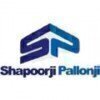
Graduate Engineer Trainee (Get) Interview Questions & Answers
Shapoorji Pallonji Groupposted on 19 Nov 2021
Interview Questionnaire
10 Questions
- Q1. 1. Tell me about yourself?
- Q2. 2.Why do you want to join us?
- Q3. 3.What job role do you expect?
- Q4. What is bleeding?
- Ans.
Bleeding is the process of removing excess air from a hydraulic system.
Bleeding is necessary to ensure proper functioning of hydraulic systems.
It involves removing air bubbles from the system by opening valves or using a vacuum pump.
Bleeding is commonly done in brake systems to ensure proper braking performance.
It can also be done in cooling systems to prevent overheating.
Bleeding is important to prevent damage to the
- Q5. What is segregation?
- Ans.
Segregation refers to the separation of different components or materials from a mixture.
Segregation can occur due to differences in size, density, or shape of the components.
Examples of segregation include the separation of oil and water in a mixture, or the separation of different sized particles in a granular material.
Segregation can have negative effects on the quality and consistency of a product, such as in the c...
- Q6. What is workability of concrete?
- Ans.
Workability of concrete refers to its ease of mixing, placing, and compacting.
Workability is a crucial property of concrete that affects its strength, durability, and appearance.
It is influenced by factors such as water-cement ratio, aggregate size and shape, and admixtures.
Concrete with good workability can be easily placed and compacted without segregation or bleeding.
Various tests such as slump test, flow test, and ...
- Q7. What is W/c ratio? How can we improve concrete without changing w/c ratio? ( Ans: By adding admixture, superplaticizer)
- Ans.
W/c ratio is the ratio of water to cement in concrete. Admixtures like superplasticizer can improve concrete without changing w/c ratio.
W/c ratio is a crucial factor in determining the strength and durability of concrete.
It is the ratio of the weight of water to the weight of cement used in the mix.
A lower w/c ratio means stronger and more durable concrete.
Admixtures like superplasticizer can improve workability, reduc...
- Q8. Questions based on Projects and Internship!
- Q9. Do you want to relocate?
- Q10. Higher studies?
Interview Preparation Tips
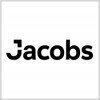
Graduate Engineer Trainee (Get) Interview Questions & Answers
Jacobs Engineering Groupposted on 28 Jun 2022
I applied via Naukri.com and was interviewed in Dec 2021. There were 2 interview rounds.
The test was based on aptitude section and core section(mine was chemical).
(2 Questions)
- Q1. Heat transfer phenomenon
- Ans.
Heat transfer is the movement of thermal energy from one object to another due to a temperature difference.
Heat can be transferred through conduction, convection, and radiation.
Conduction is the transfer of heat through a material without any movement of the material itself.
Convection is the transfer of heat through the movement of fluids.
Radiation is the transfer of heat through electromagnetic waves.
Examples of heat ...
- Q2. Fluid mechanics related formula and details
Interview Preparation Tips

Graduate Engineer Trainee (Get) Interview Questions & Answers
Worleyposted on 6 Jan 2025
I applied via campus placement at Jawaharlal Nehru Technological University (JNTU) and was interviewed in Dec 2024. There was 1 interview round.
GD topic was "pros and cons of strat ups"
Everty member who gave GD was eligible for interview
They gave marks for every candidate
Interview Preparation Tips
It was pool campus interview in hyderabad at jntuh College.
GD was done in 10 members group
The topic was "pros and cons of start ups"
Then interview....
For first 6 members they asked questions on FM (even if we said our favorite subjects which didn't include FM,they asked questions from it.)
The questions were:
What is npsh
What is cavitation
What happens if vapor pressure decreases in pumps
How much should be the minimum vapor pressure....any formulae
Functions used in FM
Suction head formula and their types
Formulae used in FM
Bernoulli's theory
Questions based on minor and major project(remember the formulae used in projects)
In thermodynamics and HT
Modes of heat transfer
How do you relate enthalpy and entropy and efficiency of pump( questions on minor project)
For last 4 members they asked most questions from CRE(they got bored from asking same FM questions)

Graduate Engineer Trainee (Get) Interview Questions & Answers
Saint-Gobainposted on 21 Aug 2022
Topic- EV vehicles a disruption to automobile market in India
Time- Each person was given 1 min to speak
Structure- Personal view round and debate round
(1 Question)
- Q1. Questions were all regarding the resume.
(1 Question)
- Q1. Willingness to join and preferred job location
- Ans.
I am willing to join as a Graduate Engineer Trainee and my preferred job location is [preferred location].
I am highly motivated to join as a Graduate Engineer Trainee.
I am excited about the opportunity to apply my engineering skills and knowledge in a professional setting.
I am eager to learn and grow in a challenging work environment.
I believe that joining as a Graduate Engineer Trainee will provide me with valuable ex...
Interview Preparation Tips
Tell us how to improve this page.
Kalpataru Projects International Interviews By Designations
- Kalpataru Projects International Deputy Manager Interview Questions
- Kalpataru Projects International Assistant Manager Interview Questions
- Kalpataru Projects International Civil Engineer Interview Questions
- Kalpataru Projects International Senior Engineer Interview Questions
- Kalpataru Projects International Site Engineer Interview Questions
- Kalpataru Projects International Civil Site Engineer Interview Questions
- Kalpataru Projects International Management Trainee Interview Questions
- Kalpataru Projects International ITI Electrician Interview Questions
- Show more
Interview Questions for Popular Designations
- Graduate Apprentice Trainee Interview Questions
- Graduate Trainee Interview Questions
- Graduate Apprenticeship Trainee Interview Questions
- Graduate Engineer Interview Questions
- Production Graduate Engineer Trainee Interview Questions
- Graduate Student Interview Questions
- Graduate Apprentice Interview Questions
- Post Graduate Engineer Trainee [pget] Interview Questions
- Show more
Graduate Engineer Trainee (Get) Interview Questions from Similar Companies
Fast track your campus placements

Kalpataru Projects International Graduate Engineer Trainee (Get) Reviews and Ratings
based on 17 reviews
Rating in categories
|
Deputy Manager
574
salaries
| ₹5.4 L/yr - ₹18 L/yr |
|
Senior Engineer
554
salaries
| ₹3.4 L/yr - ₹10.6 L/yr |
|
Assistant Manager
545
salaries
| ₹3.8 L/yr - ₹16 L/yr |
|
Manager
243
salaries
| ₹6.2 L/yr - ₹24 L/yr |
|
Civil Engineer
241
salaries
| ₹2 L/yr - ₹7.5 L/yr |

Sterlite Power

Adani Transmission
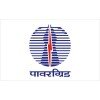
Power Grid Corporation of India

Tata Power
- Home >
- Interviews >
- Kalpataru Projects International Interview Questions >
- Kalpataru Projects International Graduate Engineer Trainee (Get) Interview Questions



